California Polytechnic State University, San Luis Obispo – William and Linda Frost Center for Research and Innovation
The Frost Center at Cal Poly San Luis Obispo is a cutting-edge interdisciplinary building designed by ZGF Architects for real-world research, featuring a contextual Italian hill town concept with natural ventilation and collaborative spaces.
The William and Linda Frost Center for Research and Innovation at Cal Poly San Luis Obispo is the physical manifestation of the University’s motto “Learn by Doing” and represents Cal Poly’s commitment to placing undergraduates at the center of real-world research.
Designed to be the first interdisciplinary building at the Cal Poly San Luis Obispo campus, the Frost Center unites three colleges under one roof. The new building will house classrooms, labs and faculty office space for the College of Liberal Arts, the College of Science and Mathematics, and the College of Agriculture, Food, and Environmental Sciences. The Frost Center represents the future of classroom and laboratory design: open, inviting, and flexible enough to support education priorities for a growing and diverse under-graduate student body.
The building massing concept is reminiscent of an Italian hill town with individual interconnected tower blocks responding to the site topography and existing buildings. This accommodates large programmatic elements while being respectful of the surrounding campus scale and landscape, resulting in a more con-textual and accessible building when compared to other research buildings of this scale.
The building’s architectural expression is defined by brick, metal, and glass, and complemented by a rhythmic repetition of exterior fins on the facade. This shading strategy on the façade featuring vertical and horizontal fins is designed to make floor-to-ceiling windows in the laboratories possible without excessive solar glare or heat gain. Based on parametric modeling studies, the fin orientation and size optimize day-light and energy efficiency. This improves occupant comfort while maximizing the views towards the hills of San Luis Obispo.
The project team delivered a high-performance building with systems designed to work as an integrated whole. Faculty offices are naturally ventilated with no active cooling and only radiant heating via ceiling panels. This strategy works because of holistic efforts to minimize solar exposure and heat gains, namely due to building orientation and its site-specific massing. Laboratories have a higher EUI benchmark than most buildings due to equipment. The equipment power density in the laboratories is reduced from standard 8W/sf to 4W/sf resulting in an EUI that’s 54% below the baseline for this building type.
Passive design strategies and natural ventilation ensures the building is as healthy as possible for occupants. One hundred percent outside air from air handling units and operable windows in offices avoids the recirculation of air that might provide an avenue for airborne pathogen exposure.
The Frost Center is the second research building for Cal Poly SLO designed by the same design team. The Warren J. Baker Center for Science and Mathematics was a landmark project for the university built in 2013 just south of the Frost Center.
Following Baker’s completion, university leadership sought an undergraduate research and teaching building that would complement the center. The design team gathered a group of faculty, staff, and students and toured them through the Baker Center to provide candid feedback on what they liked, disliked, and potential improvements. Users asked for more openness and transparency in the building for collaborative and hands-on learning. As a result of this feedback, new glass-fronted laboratories throughout Frost allow students to collaborate in the interaction spaces outside the labs while remaining in full view of their lab benches. Labs, faculty offices and classrooms are all visible across the central atrium space. This degree of connectedness ensures that the students from the three different schools the Frost Center serves have ample opportunity for cross-pollination of ideas and research.
Design: ZGF Architects
Contractor: Gilbane, Inc.
Photography: Magda Biernat

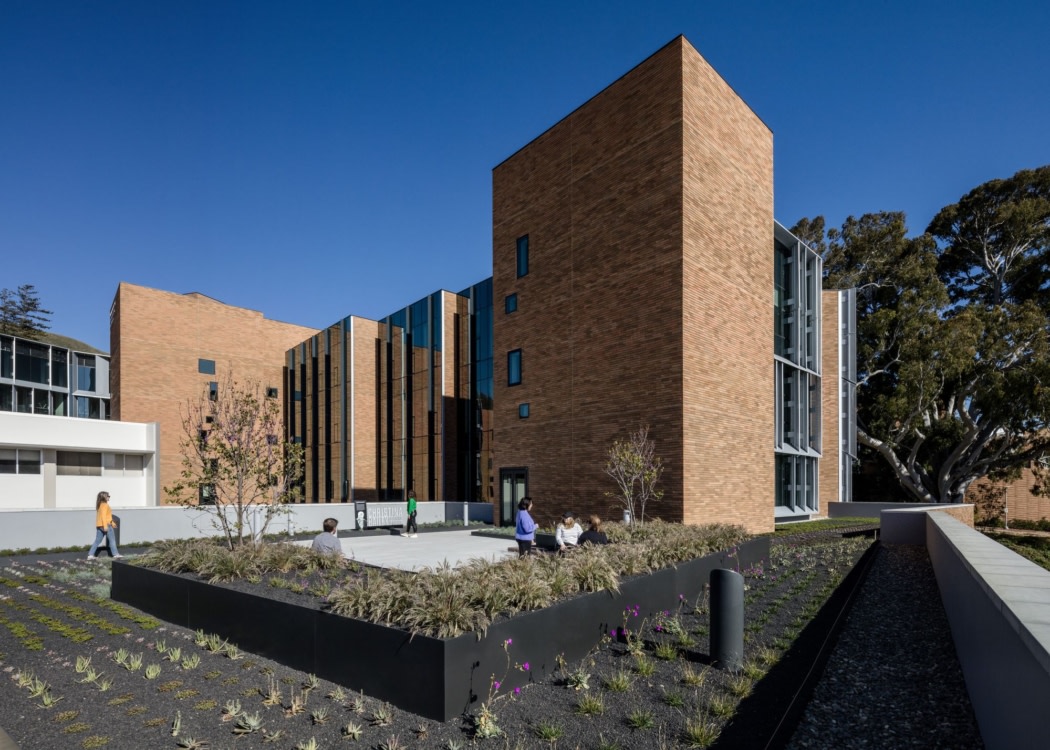
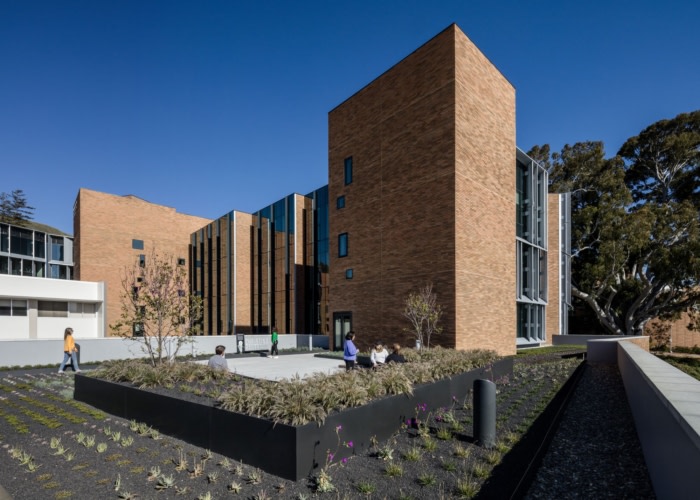
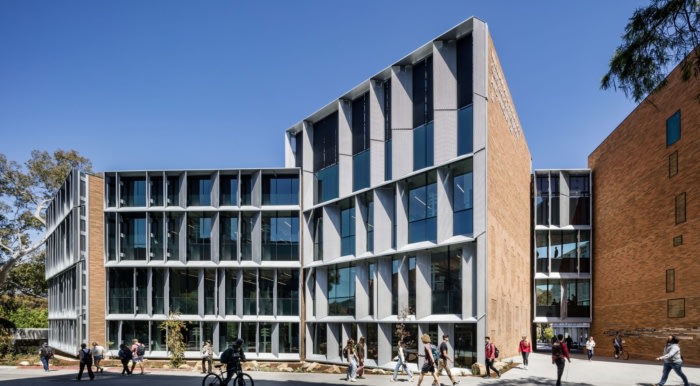
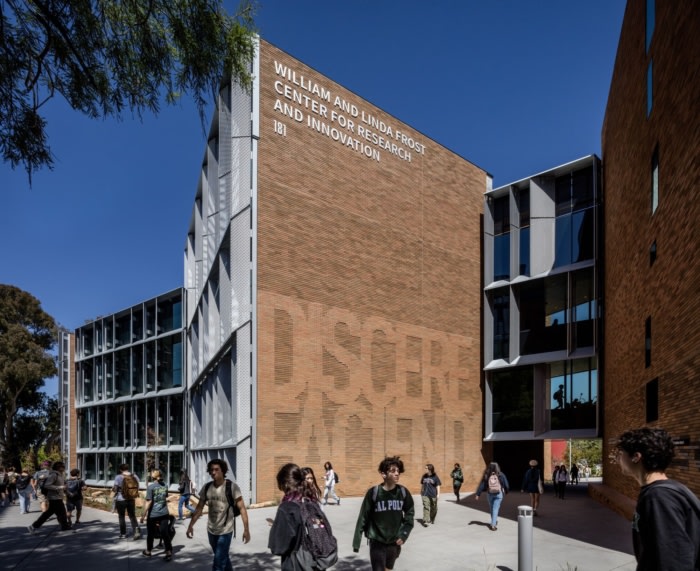

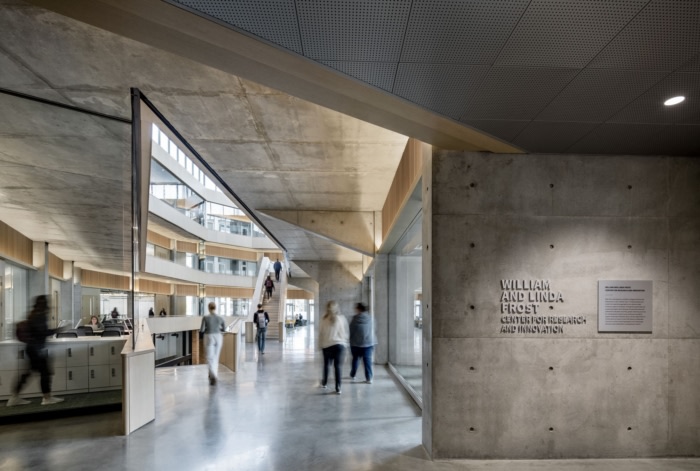
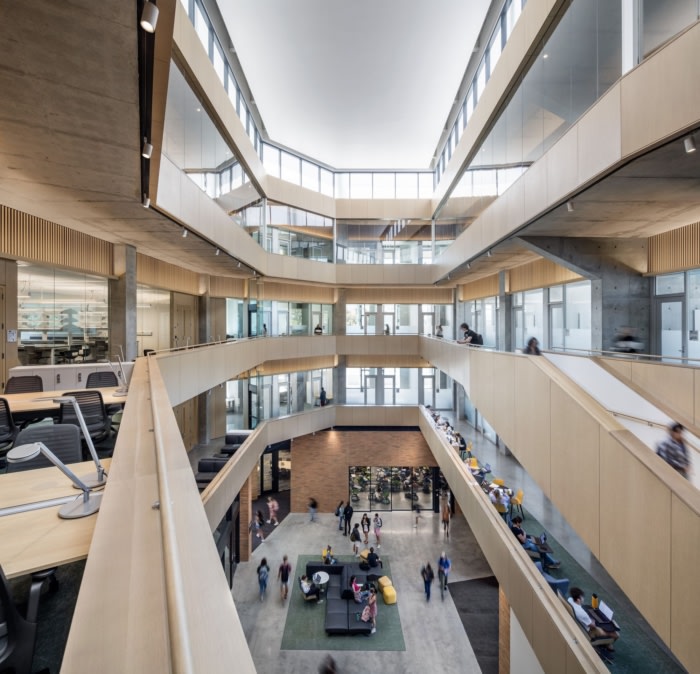

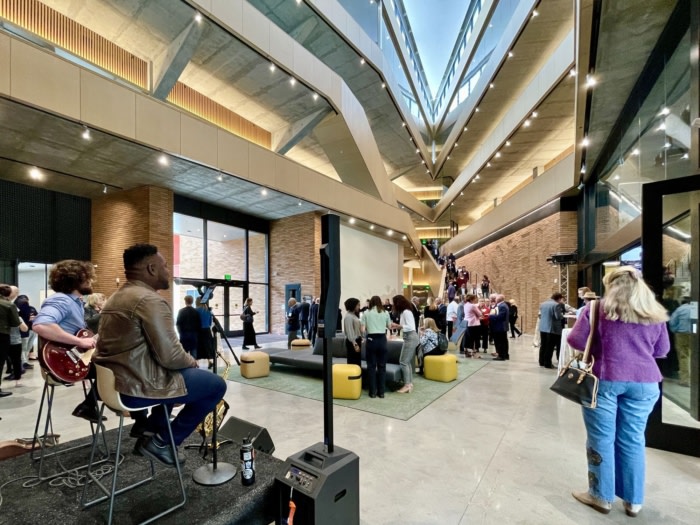
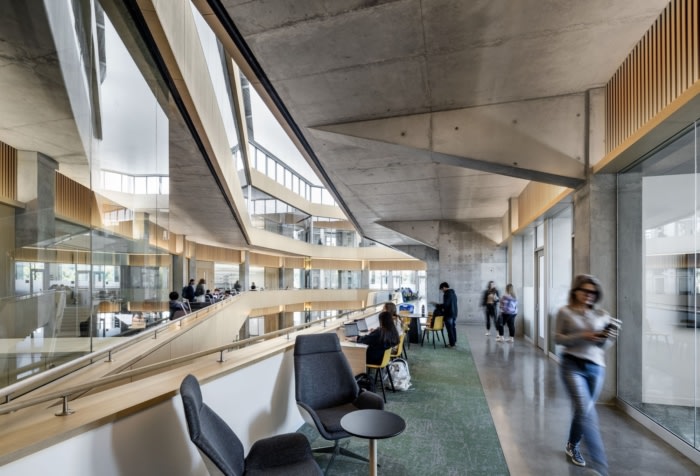

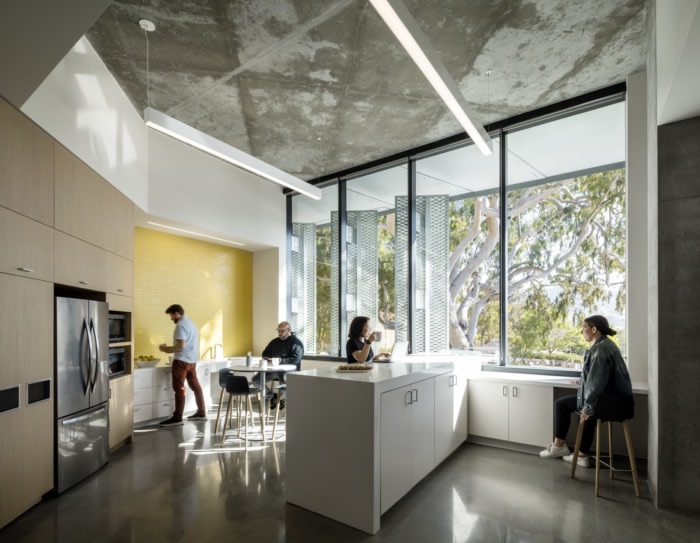

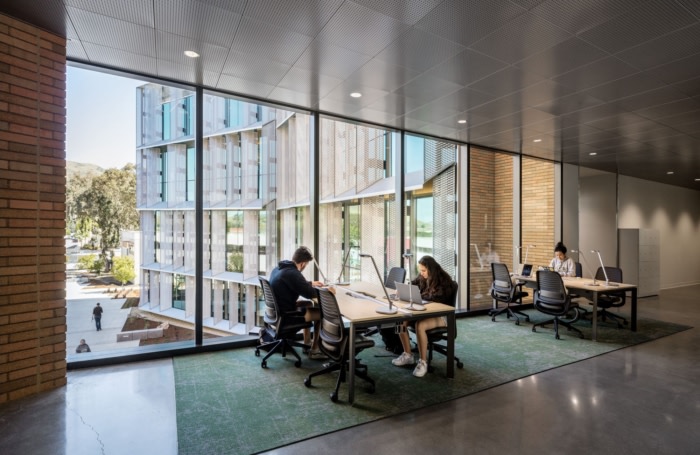
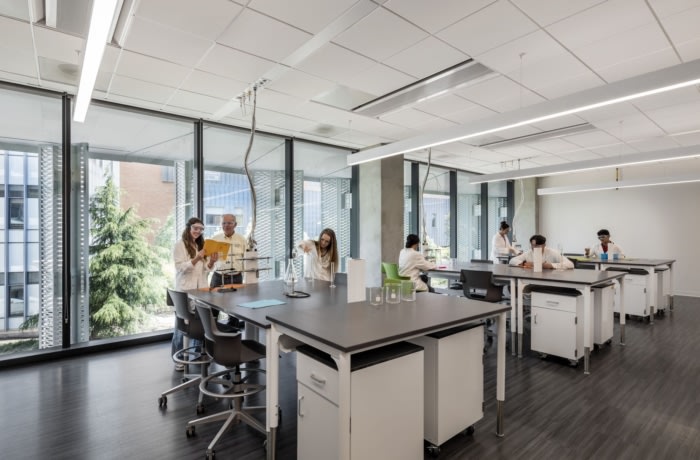
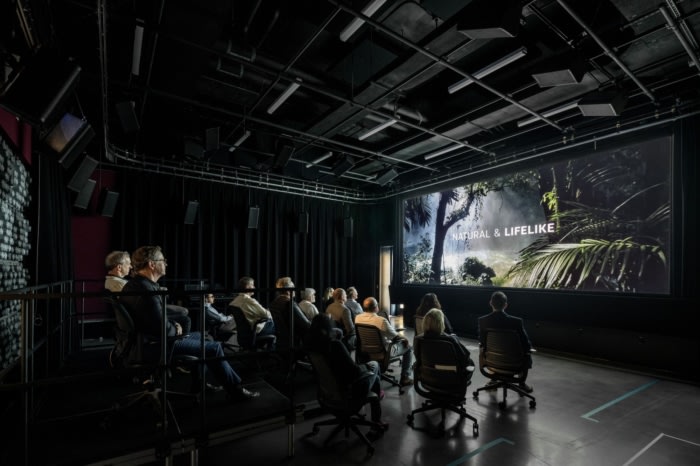



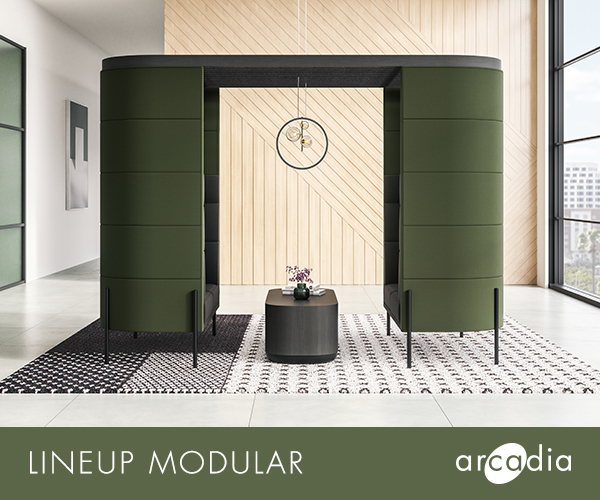
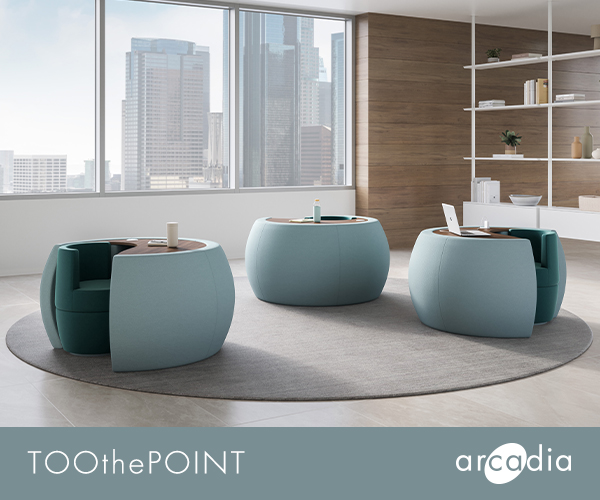




Now editing content for LinkedIn.